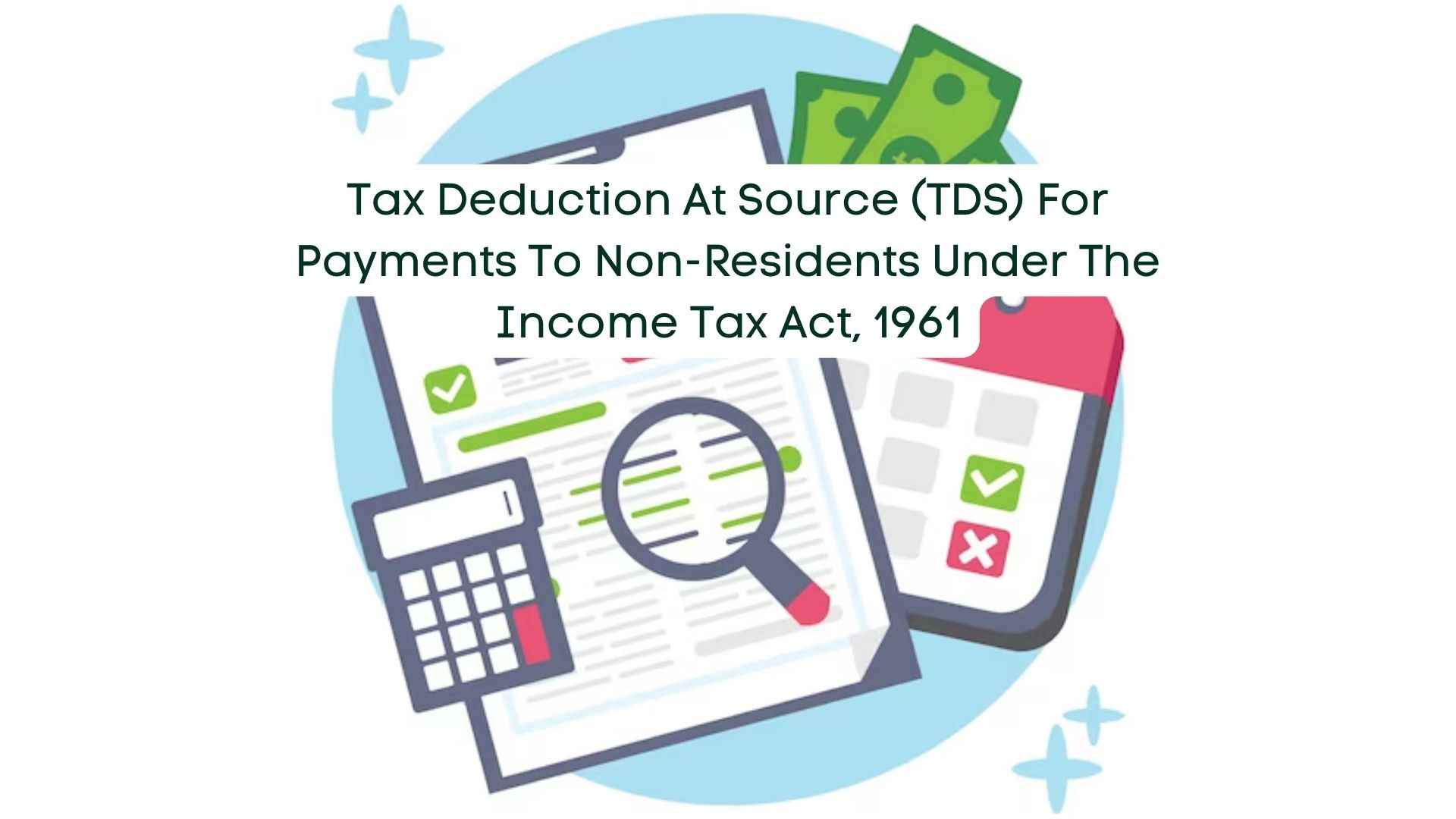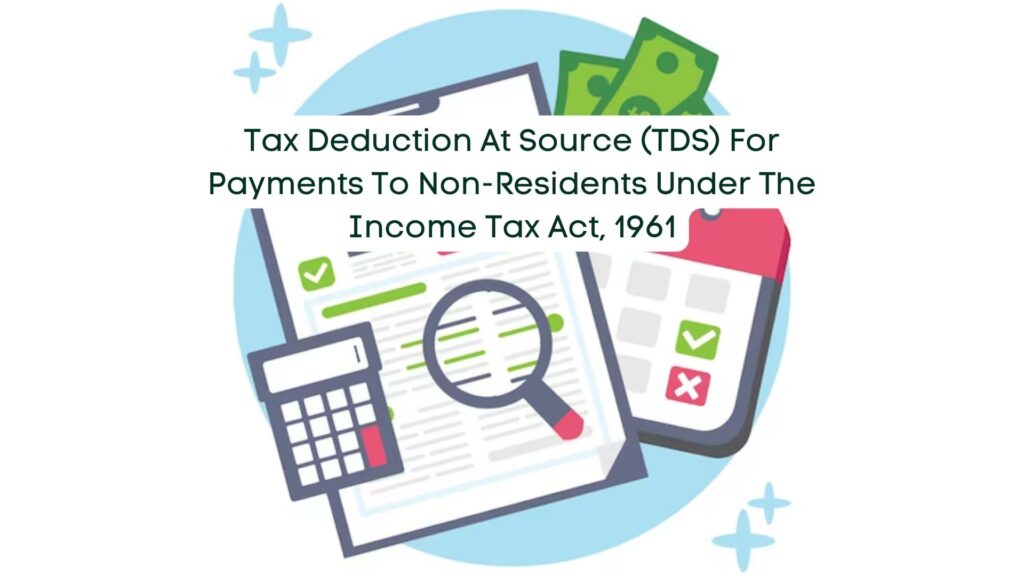
23 Feb Tax Deduction at Source (TDS) for Payments to Non-Residents under the Income Tax Act, 1961

TDS deduction for payments to non-residents can pose challenges due to the intricacies of income tax laws. The Income Tax Act of 1961 outlines specific regulations concerning residents and non-residents (NRIs), with Section 195 addressing tax deductions for non-resident Indians (NRIs). This section delineates the applicable tax rates and deductions for routine commercial transactions involving non-residents. This discussion focuses on TDS deductions concerning payments to non-residents.
TDS Deduction for Payments to Non-Residents
Under Section 195 of the Income Tax Act, 1961, tax deduction at the source is mandated before disbursing payments to non-residents. This provision allows for the deduction of tax on various payments, including interest and other taxable sums. It imposes the responsibility on any entity making payments subject to tax to deduct tax at the source. This obligation applies irrespective of whether the recipient is a non-resident individual (excluding businesses) or a foreign company.
Moreover, regardless of whether the payer is a resident or non-resident, they are obligated to deduct tax at the source before making payments taxable in India for non-residents. This preemptive deduction helps mitigate income loss by subtracting the sum before remitting payment to non-residents.
Payer and Payee Definitions under Section 195
Section 195 of the Income Tax Act, 1961, defines crucial terms such as “payer” and “payee.” The payer refers to the entity remitting payment to a non-resident payee. Eligible payers encompass individuals, Hindu Undivided Families, firms, non-residents, foreign companies, and juristic persons, regardless of their taxable income in India. The payee denotes a non-resident lacking a permanent Indian address.
Payers may include:
- Individuals
- Hindu Undivided Families
- Firms
- Non-residents
- Foreign Companies
TDS in Accordance with Section 11 of the Income Tax Act, 1961
Several key considerations must be noted when evaluating TDS deductions under Section 195:
- Payers must obtain a Tax Deduction Account Number (TAN) before making tax payments, as per Section 203A. This requires submitting Form 49B.
- Remitters must receive Form 15CB from a Chartered Accountant and file Form 15CA online through the Income Tax Website for each remittance.
- Tax must be deducted at the source when making payments to non-residents. Providing the non-PAN resident's details is crucial.
- The deducted tax must be remitted through a challan by the 7th of the subsequent month.
- Tax deposits can be made at government-approved banks or through the income tax department.
- Quarterly TDS returns must be filed, with deadlines corresponding to each quarter.
- After filing the TDS return, the payer can issue a TDS certificate.
TDS Rates as per Section 195
TDS rates under Section 195 of the Income Tax Act, 1961, are inclusive of applicable education and surcharges. Contributions made at Double Taxation Avoidance Agreement (DTAA) rates do not incur additional education cess or fees.
Penalties for Non-Compliance with Section 195
Non-compliance with Section 195 entails several penalties:
- Failure to deduct tax at the source results in disallowance under Section 40(a)(i).
- Interest at a rate of 1.5 percent per month, or part thereof, applies if tax deducted is not deposited within the specified timeframe.
- Failure to pay deducted TDS incurs a penalty equal to the TDS amount.
- A penalty equivalent to the shortfall between the actual deductible amount and the deducted amount applies in case of tax shortfall.
Conclusion
Section 195 of the Income Tax Act, 1961, plays a crucial role in regulating tax deductions and rates concerning non-resident Indian citizens’ everyday commercial activities. This provision addresses all forms of income, aiming to offset revenue loss due to foreign residents’ tax liabilities by deducting an equivalent amount at the source. Consequently, it stands as a pivotal provision for businesses and companies.


No Comments